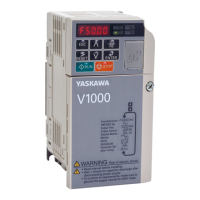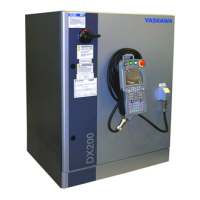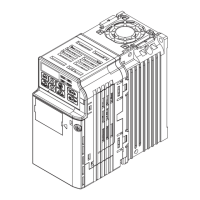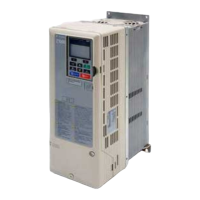88 YASKAWA ELECTRIC SIEP C710606 44B YASKAWA AC Drive T1000V Technical Manual
4.6 Auto-Tuning
4.6 Auto-Tuning
◆ Types of Auto-Tuning
There are three types of Auto-Tuning. Select the best type of Auto-Tuning for the application. Refer to Auto-Tuning
Procedure on page 89.
Note: Auto-Tuning cannot be performed on permanent magnet motors (IPM, SPM, etc.).
◆ Before Auto-Tuning the Drive
Check the items below before Auto-Tuning the drive.
■
Basic Auto-Tuning Preparations
• Auto-Tuning automatically determines the electrical characteristics of the motor. This is fundamentally different from
other types of Auto-Tuning features used in servo systems.
• Auto-Tuning requires the user to input data from the motor nameplate. Make sure the information written on the
nameplate is available before Auto-Tuning the drive.
• For best performance, be sure the drive input supply voltage equals or exceeds the motor rated voltage.
Note: Performance can be enhanced by using a motor with a base voltage that is 20 V (40 V for 400 V class models) lower than the
input supply voltage. This may be of special importance when operating the motor above 90% of base speed, where high torque
precision is required.
• Auto-Tuning is not possible with permanent magnet motors.
• To cancel Auto-Tuning, press the STOP key on the LED operator.
• Table 4 .5 describes digital input and output terminal status during Auto-Tuning.
Table 4.5 Digital Input and Output Operation During Auto-Tuning
WARNING! Sudden Movement Hazard. Do not release the mechanical brake during stationary Auto-Tuning. Inadvertent brake
release may cause damage to equipment or injury to personnel. Ensure that the mechanical brake release circuit is not controlled by
the drive multi-function digital outputs.
Note: It is recommended that Rotational Auto-Tuning is performed with the load disconnected. Failure to comply could result in
improper drive operation. If Rotational Auto-Tuning is performed for a motor coupled to a load, the motor constants will be
inaccurate and the motor may exhibit abnormal operation. Disconnect or decouple the motor from the load.
Type Setting Application Conditions and Benefits Control Mode
Rotational Auto-
Tuning for OLV
Control
T1-01 = 0
• Assumes the motor can rotate during the Auto-Tuning process
• Achieves high-performance motor control and should be performed whenever
Open Loop Vector Control is used
Open Loop Vector
Control
Stationary Auto-
Tuning for Line-
to-Line Resistance
(V/f and OLV
Control)
T1-01 = 2
For use when:
• The motor cable exceeds 50 m
• The motor cable length has been modified after Auto-Tuning has been previously
performed
• When motor capacity and drive capacity differ
V/f Control, Open Loop
Vector Control
Rotational
Auto-Tuning for
V/f Control
T1-01 = 3
• Assumes the motor can rotate during the Auto-Tuning process
• Improves torque compensation, slip compensation, energy savings, and Speed
Search performance
• Should be performed when Speed Estimation Type Speed Search or Energy Saving
is used in V/f Control
V/f Control
Auto-Tuning Type Digital Input Digital Output
Rotational Auto-Tuning for OLV Control Not available Functions the same as during normal operation
Stationary Auto-Tuning for Line-to-Line Resistance Not available Maintains the status at the start of Auto-Tuning
Rotational Auto-Tuning for V/f Control Not available Functions the same as during normal operation
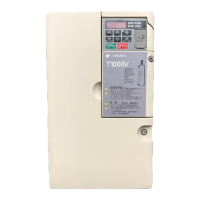
